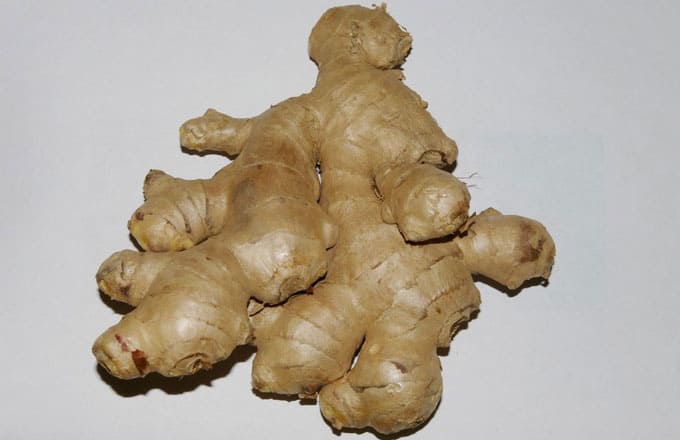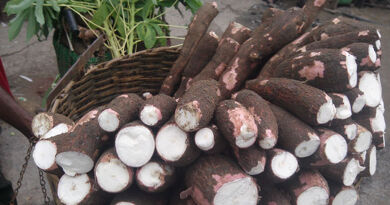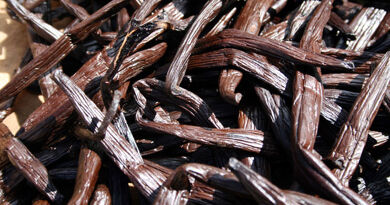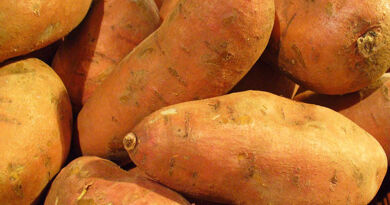Ginger
Ginger is originally from India. Belonging to the Zingiberaceae family which are generally herbs with tall leafy stems and horizontal rhizomes, this plant was cultivated from the beginning of colonization, in Martinique, for its aromatic rhizomes.
Ginger was exported to France
Growing this plant posed no particular problems. However, according to what Father Labat wrote, he would have sold at exorbitant prices: “From the Peace of Riswick in 1698, until the war of 1702, Ginger has earned Martinique from ten to fourteen pounds per cent. It is a considerable price, if we look at how easy it is to make this merchandise … ” In the boats, it was used to fill the void in the barrels and that of the other goods which left the colony in the direction of the Metropolis. The captain of the ships and the sailors took advantage of it because, with humidity, the ginger rhizomes increasing in weight, they could sell them at a better price. They even went so far as to sprinkle them with sea water to make them heavier. But the culture of Ginger had to be abandoned because, for lack of freight, the rhizomes piled up in the shops of the time and rotted without being carried away. As early as the 17th century, it was eaten either green or candied, which was said to be much better. At the time, it was said that it made it possible to resist the excessive humidity of the country. It is used in confectionery, but also in the manufacture of beer “Ginger” which is widely consumed in the English islands.
How do you make ginger
As always, it is from Father Labat that we borrow the recipe: “When you want to preserve it in a way that it can be presented to honest people, you pick it long before it is ripe, and when it is still so tender that its fibers are almost indistinguishable from rest, it is carefully scraped to remove all the skin, and it is cut in slices, without getting as close as possible to the large veins, which you can easily feel when cutting. Soak it three or four days in sea water, which you change twice a day, and then, for seven or eight days in fresh water, which you also change twice in twenty -four hours. After that, it is boiled in plenty of water for a good hour, and put back into fresh water for a day. After it is drawn and drained, it is put in a weak syrup, but well clarified and all hot, without however boiling it, where it is left for twenty-four hours. We take it out at the end of that time; let it drain, and put it in another syrup stronger than the first; what we do three days in a row. We throw away all these syrups as useless, because they have contracted all the rest of the acridity, and the too spicy taste of the fruit; Finally, we leave it if we want to keep it liquid, and where we get it when we want to dry it … ” And he continued thus: “It is common that the Ginger confit in this way loses its acrid and mordicant taste, and does not stop retaining its heat and its other good qualities …”
Although the various manipulations to arrive at this confit seem long, it must have been much sought after at that time, because it was credited with many virtues, namely:
that it facilitates digestion, and “drives out the winds”; that he consumes the phlegms which are in the stomach; it cleans the ducts, it stimulates the appetite; it causes urine and makes the breath soft and good-smelling. (Father Labat). It also appears that this Ginger confit was an excellent remedy for scurvy, so much so that people who traveled always carried it.




